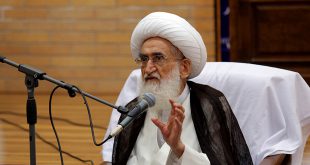The formation of the Safavid state (1501-1722) in Iran was transformative for Shī‘īism and its educational systems. The sixteenth century, therefore, was a turning point for the proliferation of Shill scholarship and educational institutions in Iran and the shrine cities of Najaf and Karbala’ in southern Iraq. Shortly after the Safavids proclaimed Shī‘īism as the state religion in ism they be-came powerful patrons of Shī‘ī scholars (‘Ulamaʼ) and centers of learning. One of the most important legacies of the Safavids is their empowerment of a class of Shī‘ī clerics who presided over the conversion of the majority of Iranians from Sunnīism to Shī‘īism. In turn, the population of Shill laymen and scholars grew significantly during the early modern period. Education of elites and the masses was perhaps the most important role of the religious establishment. Safavid systems of learning, especially colleges (sing. madrasa), revived Shī‘ī traditions and formed new trends that became the basis of modem Shī‘īism. The most important centers of learning in Iran were in the Safavid capital of Isfahan as well as Shiraz and Qom. While Isfahan became the locus of Shri learning in the early modern period, the Safavids helped rebuild the Iraqi shrine cities of Najaf and Karbala’ as educational centers and pilgrimage sites. Partly because of Safavid interests in these cities, Iraq became a battleground between the Safavids and Ottomans. Although the Ottomans eventually gained the upper hand in Iraq, Shī‘ī in southern Iraq were often autonomous from Ottoman rule. After the Safavids collapsed in 1722, Karbala’ and Najaf became the global centers of Shri learning as scholarly families migrated to the shrine cities from Isfahan and elsewhere. During the next century and a half, most people in southern Iraq converted to Shī‘īism as they settled on the agricultural land surrounding the shrine cities. By the end of the nineteenth century, Najaf was home to more than forty colleges (madrasas) with hundreds of scholars and more than ten thousand students. By this time, a hundred thousand pilgrims visited Najaf and Karbala’ every year. In addition to Najaf, Qom has been the most important college town in the Shī‘ī world since the mid-twentieth century. During the early modem period, at least four major trends or schools of thought are discernable in Shī‘īism, namely Safaviyya Sufism, Usulism, Akhbarism, and philosophical Illuminationism, sometimes referred to as the “school of Isfahan.” The core of the Safavid establishment was initially com-posed of the militant Qizilbash Sufi order led by Shah Ismā‘īl (r1501-24), who claimed to be the infallible reincarnation of the Twelfth Imam, the Abrahamic prophets, and the Persian Mazdean kings. Kathryn Babayan has established that the Safavid-Qizilbash order was committed to the concepts of exaggerated (ghuluww) Shrism, loyalty to Imam ‘Ali (d.664 and Sufism. Ismā‘īl’s son and successor, Shah Tahmasp (r1504-76), promoted the legalistic school of Usuli Shī‘īism, which upheld the authority of individual scholars to articulate new social, cultural, and legal norms. In order to establish a more orthodox and orthopraxical form of Shī‘īism, the Safavids invited scholars from the Arab world, especially from Jabal al-‘Āmil in Lebanon, who promoted the Usuli school…..
Bibliographic Information
Title: Shiʿi Educational Traditions and Systems in Early Modern Iraq and Iran
Author(s): Zackery Mirza Heern
Published in: Education beyond Europe
Language: English
Length: 24 pages
 Ijtihad Network Being Wise and Faithful Muslim in the Contemporary World
Ijtihad Network Being Wise and Faithful Muslim in the Contemporary World
